Lebanon An Overview
- Area: 10,400 km2 (4,015 mi2).
- Capital and largest city: Beirut (2003 est. pop., 1,171,000).
- Population (2007 est.): 3,925,502.
- GDP (2007 est.): $40.65 billion; $10,400 per capita.
- Type of Government: multiparty republic.
- Government leader (2008): Fouad Siniora —Prime minister and acting president.
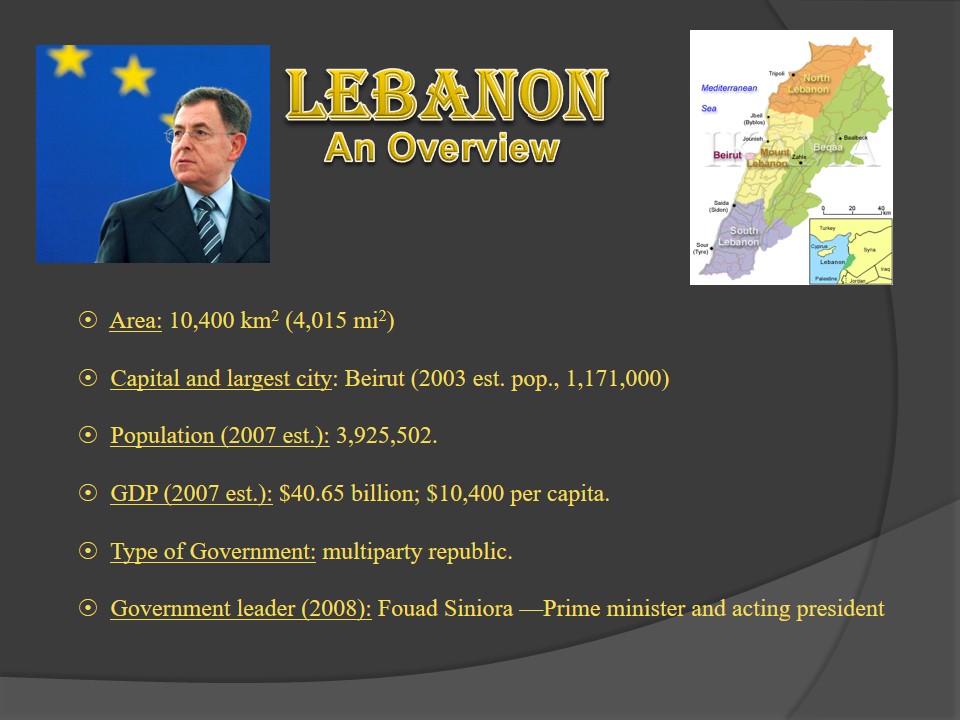
The Economy of Lebanon
- It has few natural resources.
- Before the outbreak of civil war in 1975, the energy and industry of its people compensated for that shortcoming, giving it one of the highest standards of living in the Middle East.
- Trade and tourism—along with insurance, real-estate, and banking firms—brought in most of the national income.
- Agriculture is also economically important, especially in the fertile Bekaa.
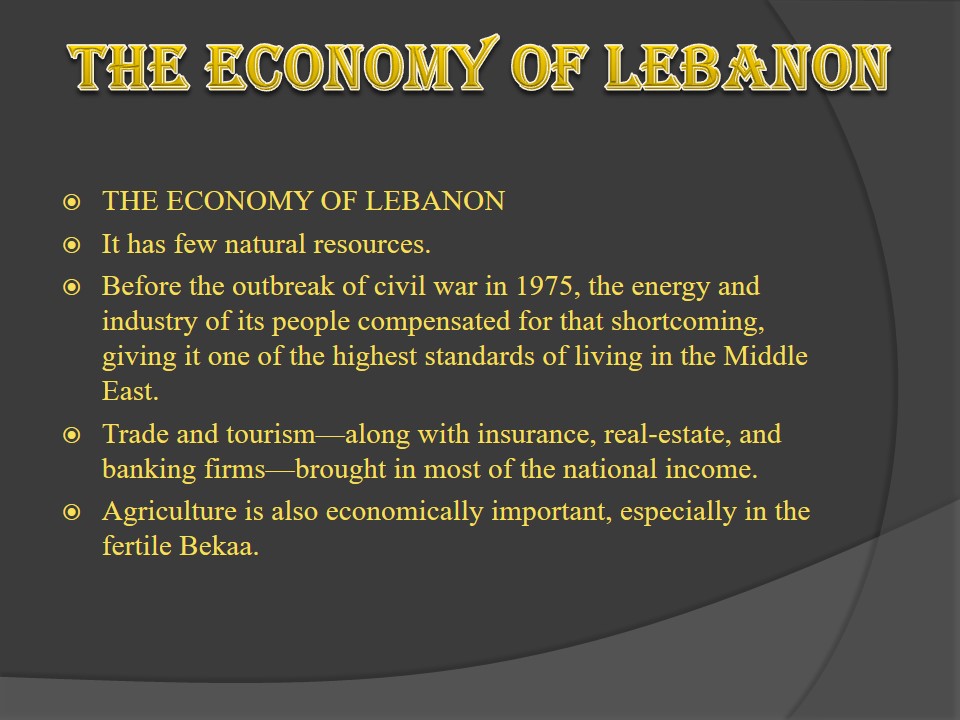
Lebanon Civil War
- 1975-Full-scale civil war erupted between Lebanese Christians and Muslims in 1975.
- One year later, Syrian troops intervened to separate the two groups, with their own interest to remain in Lebanon.
- Israel attacked PLO guerrilla bases in Lebanon in 1978, withdrew, and then invaded the country in 1982 and occupied South Lebanon including Beirut.
- In 1983 with the intrusion of US, French and Italian troops Syria then attempted to end the civil war.
- The collapse of Lebanon’s weak central government in 1988 led to the formation of rival Muslim and Christian governments.
- The February 2005 assassination of popular former Prime Minister Rafiq al-Hariri sparked widespread anti-Syrian unrest in Lebanon, known as the Cedar Revolution.
- An unrestrained civil war broke out in April 1975 between Maronite Christians and their main Muslim opponents.
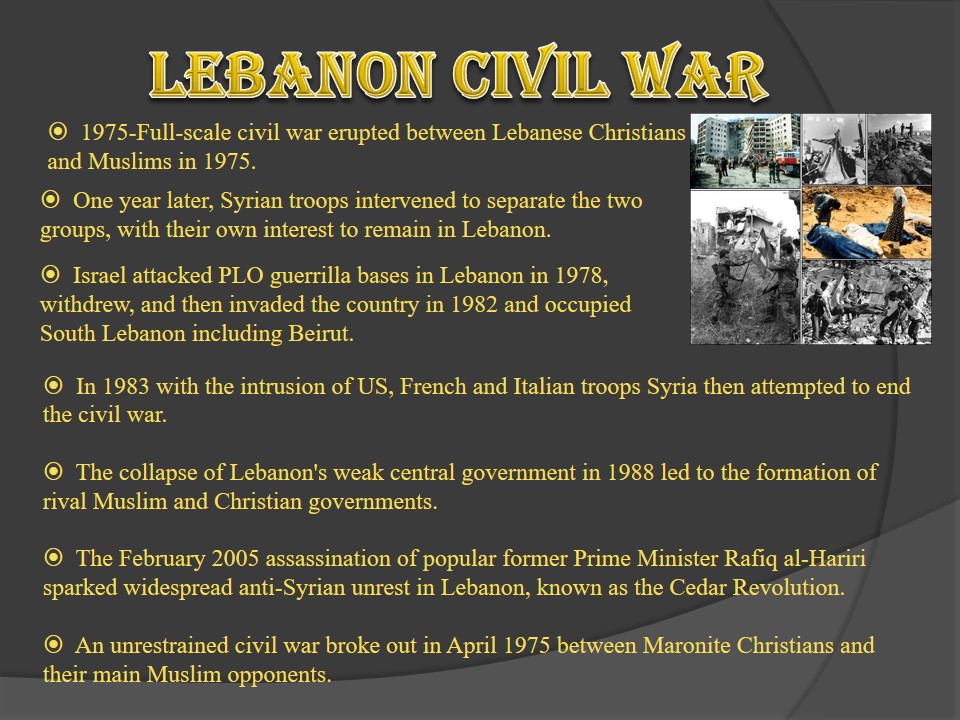
Reagan’s Administrative Primary Goals
- To strengthen the country’s defenses.
- To regain American prestige in the world.
- To reengage the Soviet enemy in a revitalized cold war.
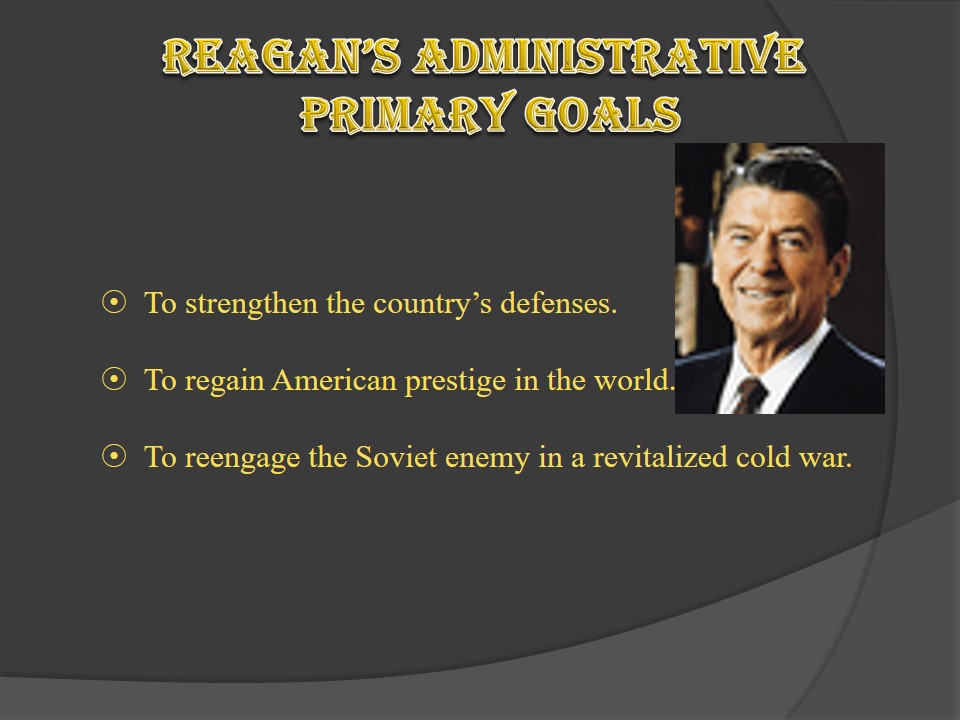
Ronald Reagan American Foreign Policy
- The Reagan administration attempted to reduce the level of fighting in Lebanon in the early 1980’s.
- In June 1982, Israel had invaded Lebanon to attack military bases of the Palestine Liberation Organization (PLO).
- The PLO is the political representative of Palestinians, many of whom fled from Israeli-controlled territory during the Arab-Israeli War of 1948 and became refugees in Lebanon.
- PLO forces in Lebanon had been attacking settlements in Israel.
- In August 1982, the United States helped arrange for the withdrawal of PLO units from Lebanon.
- It later sent several U.S. Marine Corps units to join a peacekeeping force in Lebanon.
- In October 1983, explosives set off by a terrorist collapsed a four-story Marine headquarters building at the airport of Beirut, Lebanon’s capital.
- A total of 241 U.S. troops died as a result of the explosion.
- In early 1984, the level of fighting between Lebanese groups in Beirut increased.
- In February, the United States began moving its troops stationed in Beirut to offshore ships.
- Reagan showed much political skill when he won a struggle with Congress over his defense program.
- The plan called for a large build-up of missiles, bombers, and other weapons.
- United States had major shifts in foreign policy which led to use of force.
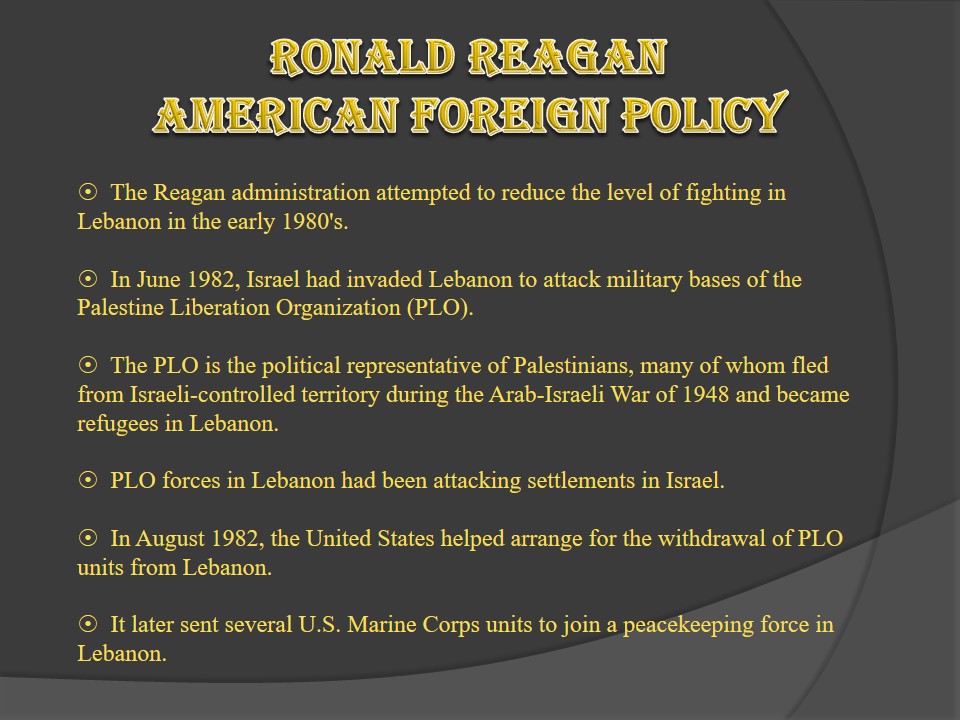
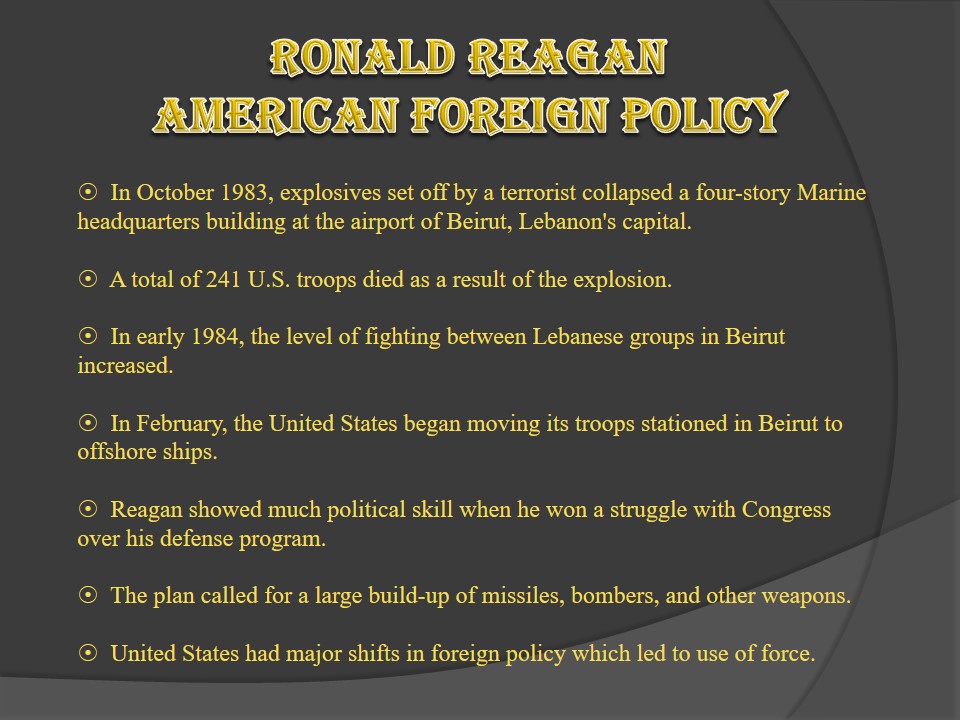
Conclusion
- The USA President, though assisted by his staff, stood alone in decision making that determine policy.
- President Reagan’s image against Soviet Union as an aggressive state definitely influenced the foreign policy against Lebanon.
- Reagan’s behavior was not evident to be rational and logical as a leader.
- The foreign choices of Reagan in the Lebanon crisis were unsatisfactory and remained puzzling in terms of their congruence with interests in Lebanon.
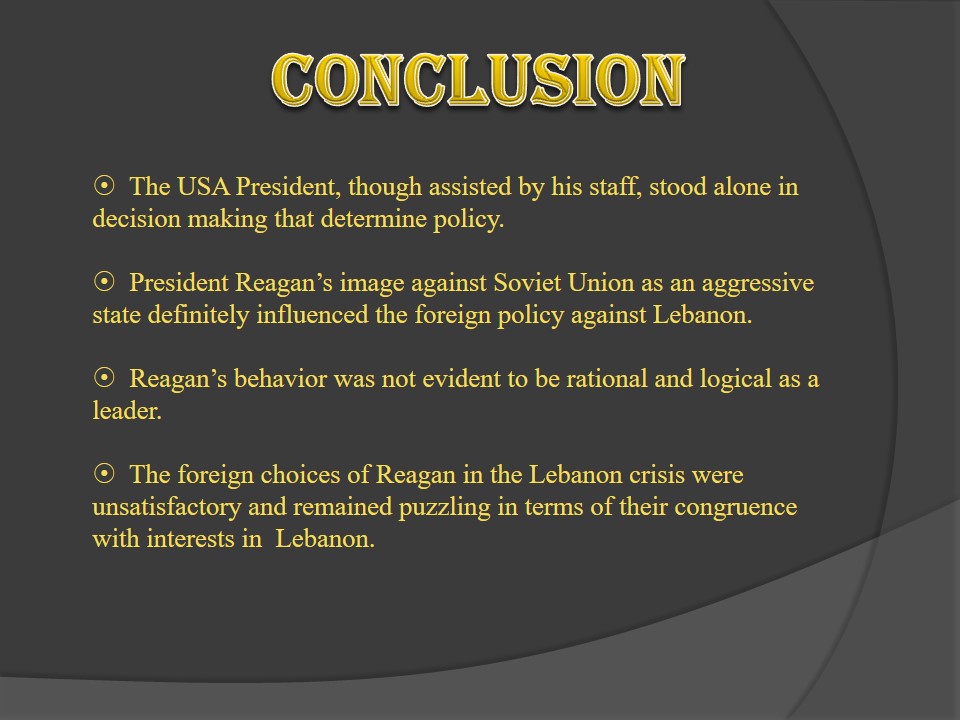
Sources
“Lebanon.” Grolier Multimedia Encyclopedia. 2008. Grolier Online. Web.
Winder, Viola H. “Lebanon.” Lands and Peoples. 2008. Grolier Online. Web.
Hitti, Philip K. “Lebanon.” Encyclopedia Americana. 2008. Grolier Online. Web.
Izzeddin, Farida. American University of Beirut. 1999.